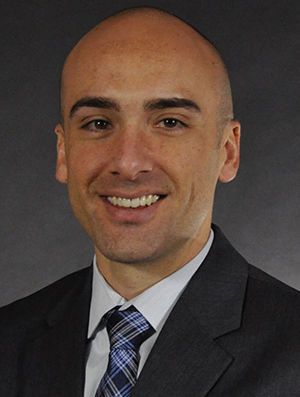New Study Finds U.S. Juvenile Gang Membership Tops 1 Million
Feb. 16, 2014
SHSU Media Contact: Beth Kuhles
There are more than 1 million juvenile gang members in the U.S., more than three times the number estimated by law enforcement, according to a new study by Sam Houston State University assistant professor of criminal justice David Pyrooz.
 |
| David Pyrooz is coauthor of the study on youth gang membership and SHSU assistant professor of criminal justice. |
“Gang membership between ages 5 and 17 years in the United States,” published in the Journal of Adolescent Health, challenges many popular demographic stereotypes about gangs, finding that an average of 2 percent of U.S. youth are gang members, with involvement highest at age 14, when about 5 percent of youth are in gangs. Youth in gangs also come from all types of backgrounds.
“The public has been led to believe that gang members are black and Latino males, and that once someone joins a gang they cannot leave a gang, both of which are patently false,” Pyrooz said.
Pyrooz, along with his coauthor Gary Sweeten, associate professor of criminology and criminal justice at Arizona State University, said that these stereotypes are portrayed by Hollywood and law enforcement.
The study also found that gangs have a high turnover rate of 36 percent, with about 400,000 youth joining gangs and another 400,000 youth leaving gangs every year. This means that gangs have to constantly recruit new talent to their groups, not unlike the service industry or other occupations where employees frequently quit after a short period.
“Being a gang member is not all that it is cracked up to be, which is something kids realize once they get involved and find out that the money, cars, girls, and protection is more myth than reality,” Pyrooz said.
Law enforcement severely undercounts juvenile gang members, with national estimates at 300,000—less than one-third of what was found in the study. The reason, Pyrooz said, is because “law enforcement uses a top-down strategy, recording older and more criminally involved youth as gang members, which ignores younger and more peripherally gang-involved youth, all of whom are captured in the bottom-up strategy we use in this study.”
Because gang membership has so many negative health and life outcomes, even after someone leaves a gang, relying on law enforcement gang data alone would under-diagnose problems youth violence and ways to respond to it, the study found.
These youth represent an important group to be targeted for prevention and intervention programs. The findings from this study are important for youth, parents, and healthcare professionals to better understand and respond to gangs in schools, neighborhoods, and care facilities—based on facts and not popular perceptions.
“Rich and poor, black and white, male and female, and one and two-parent households—what matters is that law enforcement and healthcare clinicians avoid the stereotypes of these kids when working with this population,” said Sweeten.
The authors looked at the number of gang members, the characteristics of youth in gangs, and how many youth join and leave gangs each year in the U.S. They analyzed questions about gang membership that were included in the National Longitudinal Survey of Youth 1997, nationally representative data collected by the Bureau of Labor Statistics.
The study can be found at dx.doi.org/10.1016/j.jadohealth.2014.11.018.
- END -
This page maintained by SHSU's Communications Office
Associate Director: Julia May
Manager: Jennifer Gauntt
Writer: Tammy Parrett
Located in the 115 Administration Building
Telephone: 936.294.1836; Fax: 936.294.1834
Please send comments, corrections, news tips to Today@Sam.edu.

 SamWeb
SamWeb My Sam
My Sam E-mail
E-mail

